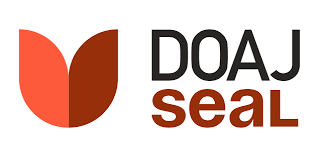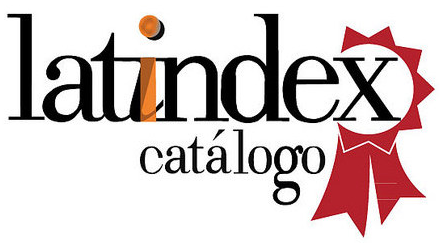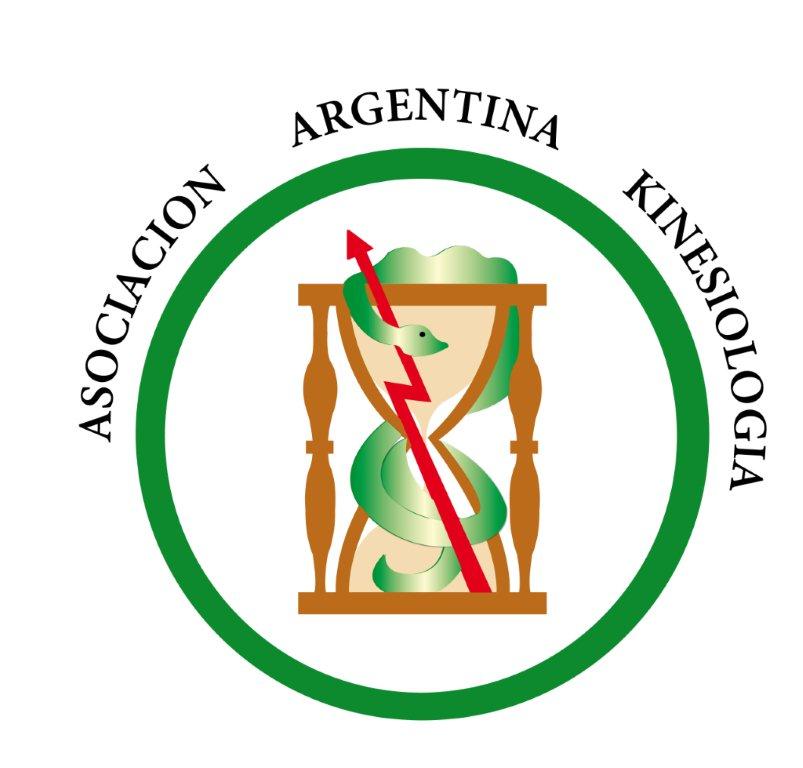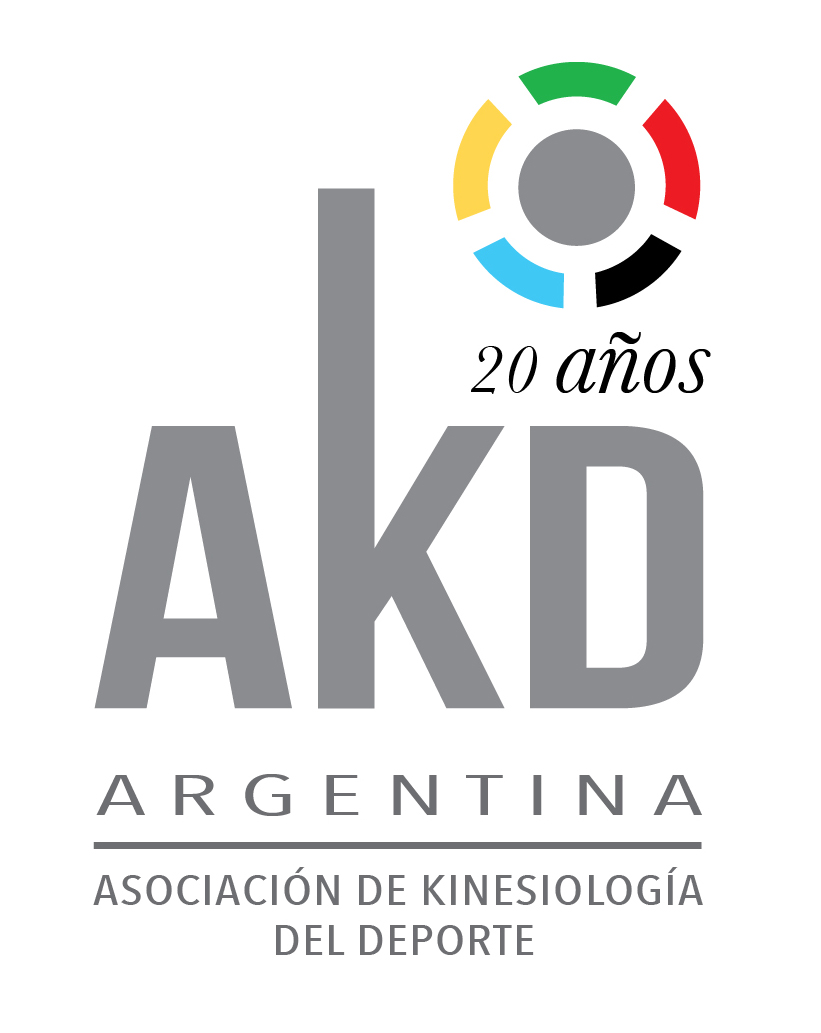Estudio epidemiológico de lesiones en un equipo profesional de fútbol en Argentina
Estudio observacional retrospectivo a 2 años
DOI:
https://doi.org/10.58172/ajrpt.v4i3.213Palabras clave:
epidemiología, incidencia, prevalencia, fútbol, lesiones deportivas, hombresResumen
Objetivo: Describir la prevalencia, incidencia, gravedad y el correspondiente impacto lesional de nuestra población, así como establecer una diferenciación entre el periodo del año, puestos y las situaciones en las que se producen las lesiones en un equipo de fútbol.
Materiales y método: Estudio observacional, descriptivo, retrospectivo y longitudinal de un equipo de la tercera categoría profesional del fútbol argentino durante dos temporadas (junio 2018 a mayo 2019 y junio 2019 a mayo 2020).
Resultados: De 66 jugadores, 53 informaron al menos una lesión, lo que resultó en una prevalencia de lesiones del 80,3% en el período de 2 temporadas. En total se registraron 139 lesiones, de las cuales 54 (38,8%) se produjeron durante los partidos y 85 (61,2%) durante los entrenamientos. Se registró una tasa de incidencia de lesiones de 53,6/1000 horas-partido-jugador y de 3,8/1000 horas-entrenamiento-jugador. La tasa de incidencia global fue de 6,0/1000 horas-jugador. La entidad más frecuente fue la lesión muscular estructural del bíceps femoral, con un total de 16 lesiones, seguida del esguince lateral de tobillo con 13 jugadores afectados.
Conclusión: La prevalencia de lesión fue de 80,3%, dentro de ella la lesión estructural del bíceps femoral, el esguince lateral de tobillo, las lesiones funcionales de los isquiotibiales fueron las de mayor incidencia en nuestra población, seguidas de las lesiones funcionales y estructurales de los aductores. Sin embargo, las lesiones del LCA fueron las que causaron mayor impacto lesional.
Descargas
Citas
Fédération Internationale de Football Association (FIFA). FIFA Big Count 2006: 270 million people active in football. [Internet]. 2007. [Accedido en 19 de octubre de 2022]. Disponible en: https://resources.fifa.com/image/upload/big-count-stats-package-520046.pdf?cloudid=mzid0qmguixkcmruvema.
Fédération Internationale de Football Association (FIFA). Professional Football Report 2019: 91% of member associations implementing club licensing. [Internet]. 2019. [Accedido en 19 de octubre de 2022]. Disponible en: https://www.fifa.com/who-we-are/news/professional-football-report-2019-91-of-member-associations-implementing-club-li.
Hägglund M, Waldén M, Magnusson H, Kristenson K, Bengtsson H, Ekstrand J. Injuries affect team performance negatively in professional football: an 11-year follow-up of the UEFA Champions League injury study. Br J Sports Med. 2013;47(12):738-42.
Van Mechelen W, Hlobil H, Kemper HC. Incidence, severity, aetiology and prevention of sports injuries. A review of concepts. Sports Med. 1992;14(2):82-99.
Slimani M, Bragazzi NL, Znazen H, Paravlic A, Azaiez F, Tod D. Psychosocial predictors and psychological prevention of soccer injuries: A systematic review and meta-analysis of the literature. Phys Ther Sport. 2018;32:293-300.
: Bahr R, Clarsen B, Derman W, Dvorak J, Emery CA, Finch CF, et al. International Olympic Committee Consensus Statement: Methods for Recording and Reporting of Epidemiological Data on Injury and Illness in Sports 2020 (Including the STROBE Extension for Sports Injury and Illness Surveillance (STROBE-SIIS)). Orthop J Sports Med. 2020;8(2):2325967120902908.
: Mueller-Wohlfahrt HW, Haensel L, Mithoefer K, Ekstrand J, English B, McNally S, et al. Terminology and classification of muscle injuries in sport: the Munich consensus statement. Br J Sports Med. 2013;47(6):342-50.
Rae K, Orchard J. The Orchard Sports Injury Classification System (OSICS) version 10. Clin J Sport Med. 2007;17(3):201-204.
Fuller CW. Managing the risk of injury in sport. Clin J Sport Med. 2007;17(3):182-187.
Bahr R, Clarsen B, Ekstrand J. Why we should focus on the burden of injuries and illnesses, not just their incidence. Br J Sports Med. 2018;52(16):1018-1021.
Hägglund M, Waldén M, Ekstrand J. Injury incidence and distribution in elite football--a prospective study of the Danish and the Swedish top divisions. Scand J Med Sci Sports. 2005;15(1):21-8.
Azubuike SO, Okojie OH. An epidemiological study of football (soccer) injuries in Benin City, Nigeria. Br J Sports Med. 2009;43(5):382-6.
Smpokos E, Mourikis C, Theos C, Linardakis M. Injury prevalence and risk factors in a Greek team's professional football (soccer) players: a three consecutive seasons survey. Res Sports Med. 2019;27(4):439-451.
Ekstrand J, Hägglund M, Waldén M. Injury incidence and injury patterns in professional football: the UEFA injury study. Br J Sports Med. 2011;45(7):553-558.
Torrontegui-Duarte M, Gijon-Nogueron G, Perez-Frias JC, Morales-Asencio JM, Luque-Suarez A. Incidence of injuries among professional football players in Spain during three consecutive seasons: A longitudinal, retrospective study. Phys Ther Sport. 2020;41:87-93.
Ekstrand J, Hägglund M, Waldén M. Epidemiology of muscle injuries in professional football (soccer). Am J Sports Med. 2011;39(6):1226-1232.
Ekstrand J, Gillquist J, Möller M, Oberg B, Liljedahl SO. Incidence of soccer injuries and their relation to training and team success. Am J Sports Med. 1983;11(2):63-67.
Kristenson K, Bjørneboe J, Waldén M, Andersen TE, Ekstrand J. The Nordic Football Injury Audit: higher injury rates for professional football clubs with third-generation artificial turf at their home venue. Br J Sports Med. 2013;47(12):775-81.
Ekstrand J, Waldén M, Hägglund M. Hamstring injuries have increased by 4% annually in men's professional football, since 2001: a 13-year longitudinal analysis of the UEFA Elite Club injury study. Br J Sports Med. 2016;50(12):731-7.
Ekstrand J, Krutsch W, Spreco A, van Zoest W, Roberts C, Meyer T. Time before return to play for the most common injuries in professional football: a 16-year follow-up of the UEFA Elite Club Injury Study. Br J Sports Med. 2020;54(7):421-426.
Waldén M, Hägglund M, Ekstrand J. Time-trends and circumstances surrounding ankle injuries in men's professional football: an 11-year follow-up of the UEFA Champions League injury study. Br J Sports Med. 2013;47(12):748-53.
Larruskain J, Lekue JA, Diaz N, Odriozola A, Gil SM. A comparison of injuries in elite male and female football players: A five-season prospective study. Scand J Med Sci Sports. 2018;28(1):237-245.
Schiffner E, Latz D, Grassmann JP, Schek A, Thelen S, Windolf J, et al. Anterior cruciate ligament ruptures in German elite soccer players: Epidemiology, mechanisms, and return to play. Knee. 2018;25(2):219-225.
Grassi A, Macchiarola L, Filippini M, Lucidi GA, Della Villa F, Zaffagnini S. Epidemiology of Anterior Cruciate Ligament Injury in Italian First Division Soccer Players. Sports Health. 2020;12(3):279-288.
Waldén M, Hägglund M, Magnusson H, Ekstrand J. ACL injuries in men's professional football: a 15-year prospective study on time trends and return-to-play rates reveals only 65% of players still play at the top level 3 years after ACL rupture. Br J Sports Med. 2016;50(12):744-750.
Nielsen AB, Yde J. Epidemiology and traumatology of injuries in soccer. Am J Sports Med. 1989;17(6):803-807.
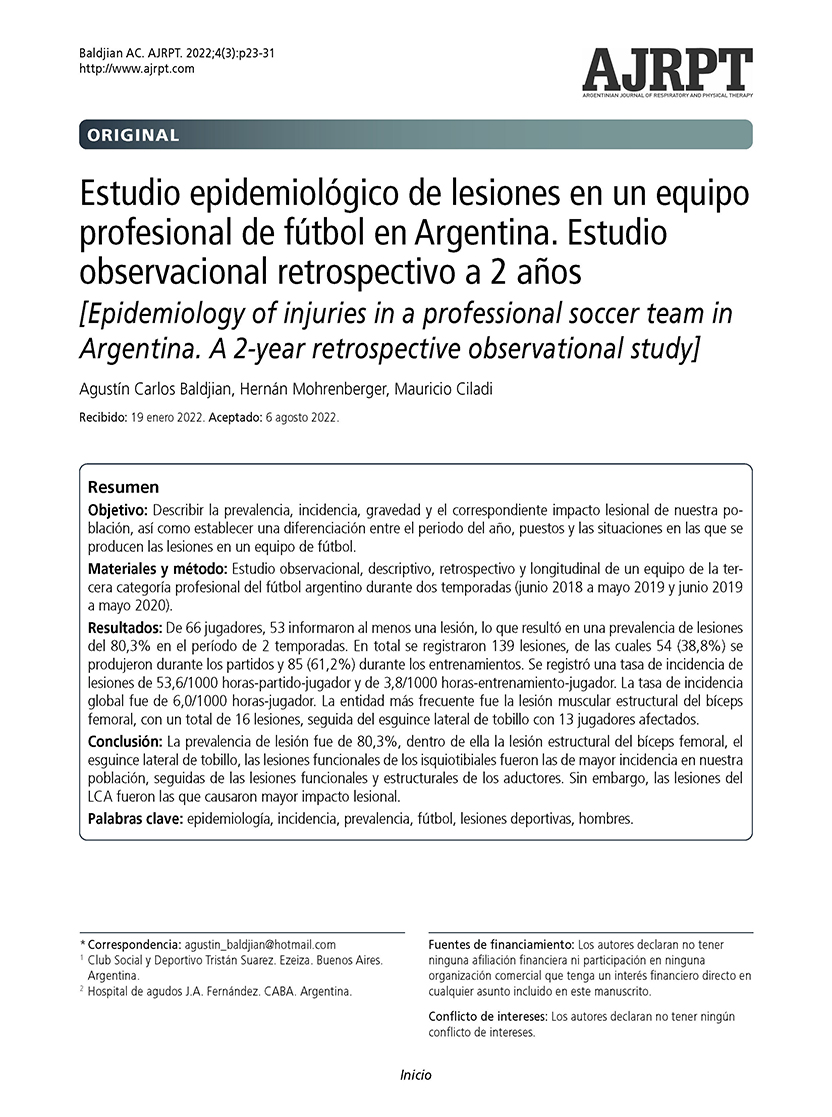
Archivos adicionales
Publicado
Cómo citar
Número
Sección
Licencia
Los autores/as que publiquen en esta revista aceptan las siguientes condiciones:
- Los autores conservan todos los derechos morales y patrimoniales de sus obras, cediendo solamente a la AJRPT el derecho a la primera publicación de éste. En consecuencia, los autores pueden realizar otros acuerdos contractuales independientes y adicionales para la distribución del artículo o texto.
- Los autores/as conservarán sus derechos de autor y aceptan la licencia de distribución de AJRPT, la cuál es Licencia de Reconocimiento - Compartir Igual Creative Commons.
- Los autores/as pueden realizar otros acuerdos contractuales independientes y adicionales para la distribución de la versión del artículo publicado en esta revista (p. ej., incluirlo en un repositorio institucional o publicarlo en un libro) siempre que indiquen claramente que el trabajo se publicó por primera vez en esta revista.
- Se permite y recomienda a los autores/as a publicar su trabajo en Internet (por ejemplo, en páginas institucionales o personales) sólo una vez que sean publicados en la revista AJRPT, ya que puede conducir a intercambios productivos y a una mayor y más rápida difusión.

Este obra está bajo una licencia de Creative Commons Reconocimiento-CompartirIgual 4.0 Internacional.







